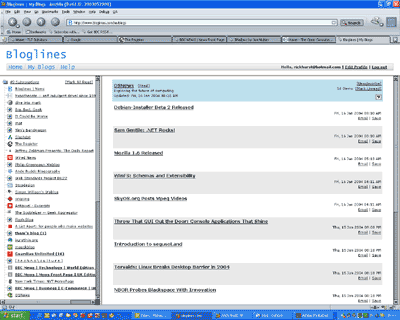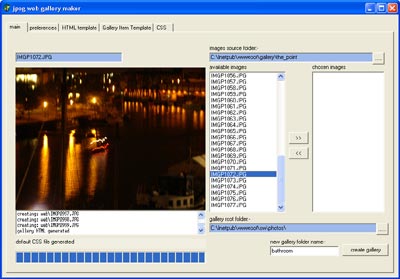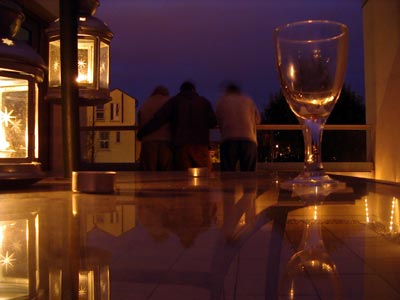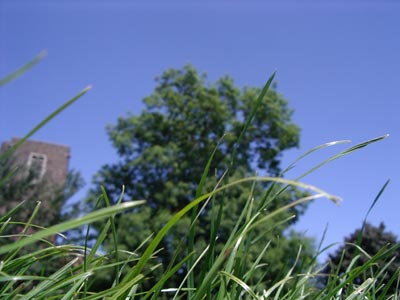Article over at Digital Web Magazine discussing the "Behaviour Layer" of a website.
In summary, a typical web page has three layers: Content, Presentation and Behaviour. In this context, XHTML is the content Layer, CSS is the presentation layer and Javascript is the behaviour layer. The article argues that it is important that the site functions with various combinations of these e.g (content + presentation + behaviour), (content + presentation) or (content + behaviour). Essential behaviour such as form validation that has been added client-side using Javascript should also be replicated server-side ("belt and braces")..
Recently i’ve been using Bloglines [link removed] news aggregator to subscribe to all the RSS/RDF enabled websites which I visit regularly. This has completely changed my browsing habits. Bloglines works in much the same way as an email inbox – you can see which sites have been updated from a list in the left pane.
So now rather than trawling through bookmarks and tabs only to find that a site hasn’t been updated since I last looked, I only visit sites that have new content.
Depending on how the RSS has been set-up you either get a list of new headlines, a list of new headlines and summaries or in some cases the whole article. Whichever way, clicking the title will take you straight to the article on the actual site.

once upon a time someone early on in the development of the web came up with the idea of making hyperlinks within a web page appear as a different colour to the rest of the text. Then at a later date (probably – i’m guessing now), arrived the concept of links appearing as a different colour if they had already been visited.
This is a useful feature as it allows you to see where you have been, therefore stops you going round in circles in your endless search for information. Or maybe when you are in a bored haze clicking frenzy like I was at lunchtime.
When CSS 1.0 arrived, we were given the ability to control these styles, and many designers opted to make visited links look the same as non-visited links, just for consistency, thus removing this once useful feature.
At time of writing I have left my visited links to show their default colours, and I have to admit it does make the page look a bit ugly, and I was wondering what to do about it, when I saw this idea of applying a background image for visited links [link removed], making them look sort of crossed-out.(Tip: click on one of the links then go back to the page where the link was).
Nice, might blatantly copy that idea one day.
I’ve been doing quite a bit of Delphi recently, and needed a little project to get my teeth into so have been building a little windows app which will let me browse and preview jpeg images in a directory, select one or more then create thumbnail and web size jpegs, plus the XHTML and CSS to display them in a basic gallery.
Of course there are already a million apps which do just this, but I have tailored this one to make the output exactly as I want it, and therefore now have a really quick and convenient way of selecting images from my camera CF card and getting them into a web gallery in a matter of seconds (OK maybe minutes) with no need to open photoshop or HTML editor.

english grass shouldn’t look this colour:-

I found it in an orange book with some kind of pixellated smurf on the cover.
I feel like the blanks have been filled in now, it really is worth getting hold of a copy if you are a web designer or involved in web design projects in any way.
My web design knowledge so far has been gained by example and by being thrown into projects at the deep end, but this book makes you stop and look at the process of designing websites from the ground up. Many of the projects I have worked on in the past, particularly when working for a large fast moving agency, started with a graphic design in photoshop, then we used old skool “slice and dice” to deconstruct the design and the used string and gaffer tape to put it back together to masquerade as a web site.
It didn’t help that the team was divided into designers and site builders. The designers, though very good at graphic design, barely knew how to open dreamweaver, let alone use HTML and CSS. The site builders weren’t allowed to do any design. It didn’t work.
I have decided that I will stop evangelizing about using CSS from now on, unless someone pays me to do it in the form of consultancy. I think I am better off attempting to lead by example, (although i’m certainly not a brilliant designer so maybe that won’t work!). I am tempted to list a final rant about the misconception that sites designed and built using web standards all look boring, but I wont. It’s all in the book.




